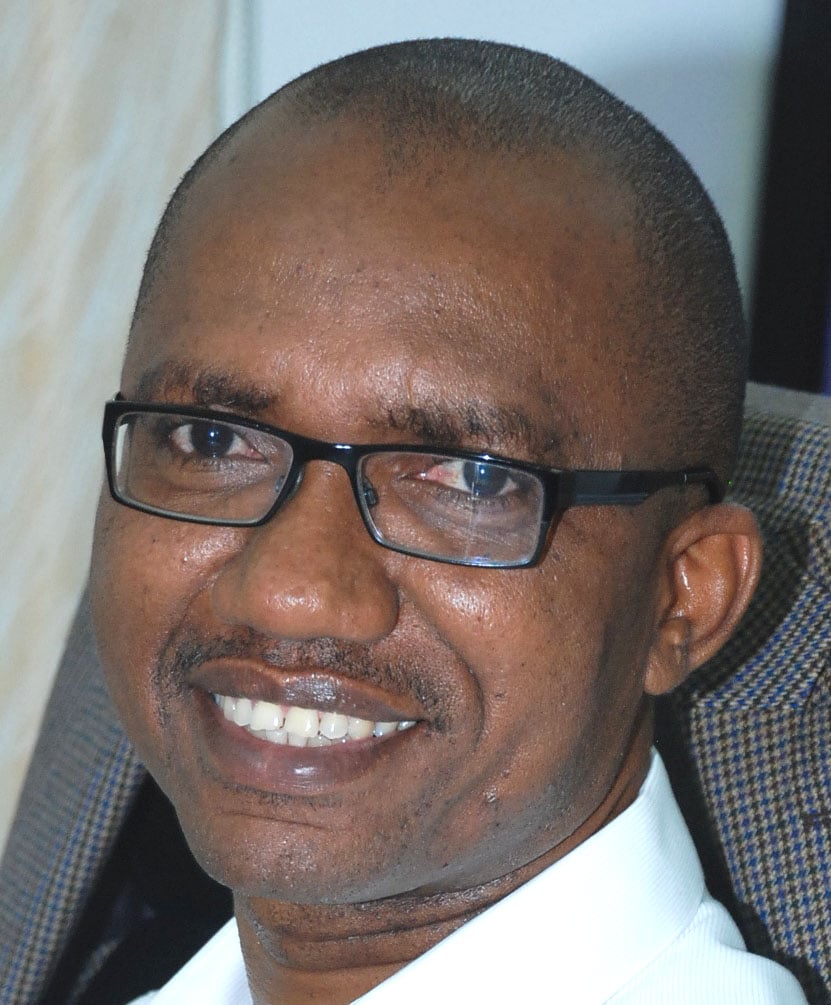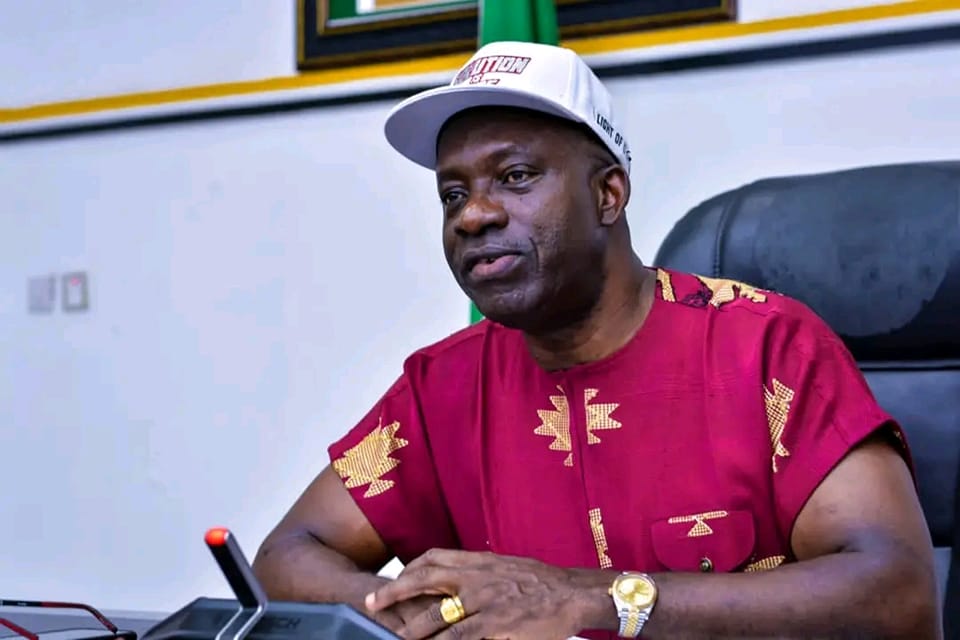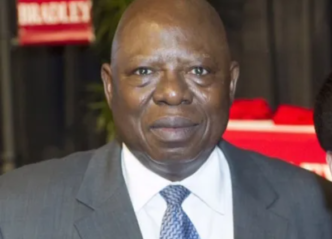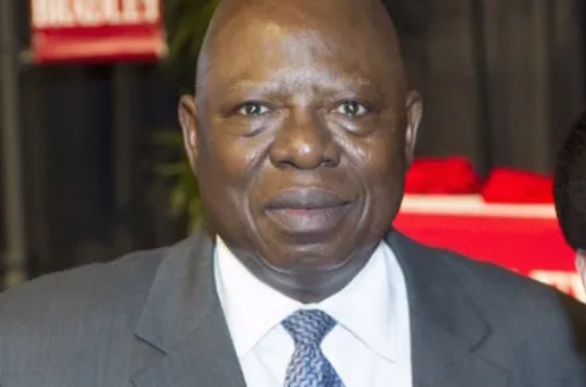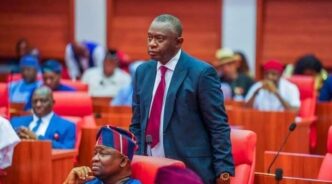I have not yet asked the author about his motivation for writing this book. Even though he alludes to it in a way with a couple of examples in the Preface, he doesn’t explain it clearly. So, he must forgive me if I imagine this.
I imagine the title was inspired by the Australian, Bryce Courtenay’s famous book, The Power of One. Although the book – unlike Ray Echebiri’s – is fiction, it is arguably one of the most evocative imitations of the formative stages of racism and apartheid in South Africa and the story of one man, Peekay’s odyssey against the odds. The Power of One clearly makes the point that even though a tree does not make the forest, some trees can define the forest.
Now, let’s turn our attention to the book at hand. Unlike Courtenay’s work of fiction, this book is a non-fiction account of a man’s life. The ‘One’ in the title is not Peekay, a five-year-old fictional character dealing with the harsh realities and trauma of an inhuman system. He is a man we know in flesh and blood. I’ll come to him shortly.
In a world that extols outsourcing, it is increasingly fashionable to outsource all outsourceable, including thinking and remembering. With the teaching of History falling out of favour, the misery of those who still care about vital historical records that could guide the present and perhaps shape the future is complete.
Advertisement
It’s easy to forget what happened before the consolidation of Nigerian banks in 2004/2005, just as we forgot the era of failed banks, which landed the country in serious trouble, as the mistakes of that era were repeated.
Echebiri’s effort in this book to help us remember is not the last time we will remember, only to forget. But if ever we find ourselves in that dark place again – which we almost did not too long ago, and I’m not sure we are completely out – then it would not be because we had not been warned.
The Power of One Man begins with a brief background of the efforts of various governments to reform Nigeria’s economy in the last nearly 50 years. From former President Olusegun Obasanjo’s first coming, when he launched Operation Feed the Nation to Shehu Shagari’s Green Revolution, through two military eras that followed, the main problem was always how to diversify the country’s economy away from oil and build viable institutions to support this process.
Advertisement
The book records that matters had reached a head when military president General Ibrahim Babangida seized power in 1985. Babangida, the man who famously said he didn’t know how Nigeria’s economy was still standing in defiance of every failed experiment to save it, didn’t lack his own ideas.
He introduced the Structural Adjustment Programme (SAP), which, according to the book, was “to achieve fast-paced economic growth through diversification of the economy (with the private sector in the driver’s seat).” It all looked good on paper, including the additional promise of liberalisation, which was supposed to improve efficiency, employment and local production.
However, as anyone who has tried to extract a nut from the palm kernel shell might agree, good intentions are not enough. While Chapter 1 of Echebiri’s six-chapter, 263-page book gives the background of the liberalisation of banking and financial services among the SAP reforms, the remaining six chapters deal with the banking consolidation, the emergence of new banks, a post-mortem, the rise of five big banks, and the profile of Professor Chukwuma Charles Soludo.
It’s in Chapter 2, entitled, “The Banking Consolidation Exercise,” that the reader first encounters the power of the one man whose audacity is at the heart of this book. That man is Professor Chukwuma Charles Soludo.
Advertisement
When Soludo was appointed Chief Economic Adviser to Obasanjo, he had no idea that he would end up in the Central Bank of Nigeria, never mind engineering a reform that would be the seismic equivalent of the banking Richter scale rattler.
The opening chapter captures the perennial debate about who makes a better Central Bank governor – economists or bankers? Let me take the reviewer’s licence and go further back a bit. The founding fathers of the United States – a country that has produced some of the best and worst Central Bankers – had divergent views about even the concept and role of banking and bankers.
While Hamiltonians, for example, take a liberal view of banks and other financial institutions as forces for economic good and progress, Jeffersonians take a dim view. Thomas Jefferson once said, “I sincerely believe that banking institutions are more dangerous than standing armies!”
I’m happy Soludo didn’t meet Jefferson. Now, with respect to who is a better fit – an economist or a banker – again, we have two good examples: Alan Greenspan, an Economist, and Mark Carney, a banker and economist.
Advertisement
On pages 46 and 47 of his book, however, Echebiri provides even more examples, including the example of Malam Adamu Ciroma, the accidental Central banker, who was neither an economist nor a banker, but whose record showed – to adapt the title of Professor Obaro Ikime’s book – that something good can come out even of a student of History.
Let’s leave the debate about whether or not the hood makes the monk for now and examine, through the eyes of Echebiri, what the power of one Monk, Soludo, did when, amid his strategic development programme of NEEDS and later SEEDS in the Presidency, Obasanjo pulled him out and deployed him as Central Bank of Nigeria governor.
Advertisement
At the time of his appointment, the banking system was on the precipice of a second failure after the distress which had, one decade earlier, consumed 40 banks. Apart from strengthening regulatory oversight, the Abacha administration had then dragged some bank chiefs before the failed banks’ tribunal to public applause and opprobrium.
But little lessons were learnt. Multiple investigations by the Nigeria Deposit Insurance Corporation (NDIC) had revealed a fresh wave of deep systemic abuse and a lifestyle of conspicuous consumption at depositors’ expense.
Advertisement
Despite the shenanigans, huge non-performing assets and appalling corporate governance, the banks heavily depended on public sector deposits. At the same time, the combined capitalisation of 89 banks – about $240 million at the time – could not compare to the $526 million of the smallest bank in Malaysia.
“The primary objective of the Nigerian banks’ consolidation reform,” Echebiri writes on page 57, “was to guarantee an efficient and sound financial system.”
Advertisement
However, there were other compelling reasons for the consolidation, as the author explains from an extract of Soludo’s speech on page 67. According to him, these reasons range from late or non-publication of annual accounts to gross insider abuse and a clear and present danger of insolvency.
Soludo had a choice: go with the flow, apply a band-aid or, as Jefferson feared, do something as radical as standing armies. He chose not the quiet, peaceful option that his name, “So-lu-udo”, conveys but a root-and-branch process that would shake the industry to its foundations in pursuit of a vision he appeared to be seeing alone.
Yet, the road to consolidation, apart from the inherent danger, was also strewn with a consolidation of pushbacks, resentment and even hostility. The matters arising, including the concerns of a prominent banker and CEO of Stanbic IBTC at the time, Mr. Atedo Peterside, about the basis, rationale and time allowed for consolidation, are captured on pages 75 and 76 of Chapter Two of the book.
In case you don’t believe Echebiri, this is what another banker and former CEO of Access Bank, Aigboje Aig-Imokhuede, said in his book, Leaving the Tarmac: Buying a Bank in Africa, about consolidation after Soludo’s famous speech of July 6, 2004 – exactly 20 years ago today.
“At the end of the meeting convened by Governor Soludo,” Aig-Imoukhude writes, “the chairmen and CEOs of the smaller banks staggered from the room as if they had just been through a war zone.”
Indeed, the aftermath of the consolidation was nothing short of a war for the soul of the country’s banking and financial system. To achieve the N25 billion new capital base within 18 months, the banks had several options: (a) private placement, (b) initial public offering, and (c) mergers and acquisitions.
Chapters Two and Three describe events leading to the commencement of consolidation, industry reactions and the eventual emergence of new banks. While banks like First Bank, with a pre-capitalisation equity base of N48.7 billion, consolidated their pole position and got even bigger by raising their equity capital by 32 per cent (making it N64.3 billion), for example, others like STB and UBA signaled one of the most celebrated mergers.
According to the author, 25 banks emerged from 75, out of the 89 that existed as of June 2004, “fully recapitalised, strong, repositioned and ready for the new era in banking.”
Echebiri quotes Soludo as saying that the successful banks accounted for 93.5 per cent of the deposit liabilities, adding that in the process of meeting the minimum capital requirement, they raised N406.4 billion in the capital market, out of which N360 billion was verified and accepted by the CBN, apart from the FDI inflow.
In a culture averse to partnerships and collaboration, 18 of the 25 new banks were products of mergers, a process through which the players learnt vital new lessons, despite themselves.
While contemplating the task of building a strong and powerful Germany, Otto von Bismarck famously said the matters of the moment were not to be settled by speeches and majority decisions but by blood and iron.
Reflecting on his experience of the consolidation, Aig-Imoukhuede, a then leading bank CEO, said in his book that in the midst of raising capital for Access Bank, he suffered a health crisis and ended up “losing blood as fast as my family members (including Herbert) could donate.”
I’m not sure Soludo’s intention was to unleash blood-sucking demons on the country. But the blood pool unconscionable bank owners and executives were collecting from the depositors’ savings had endangered the system so much that staunching the flow required something extraordinary.
But what did the overall balance sheet look like after consolidation? Was the exercise worth the blood and iron? Did it achieve the intended outcome of “a sound and efficient” banking system worthy of depositors’ and investors’ confidence and also able to produce banks that could play on an increasingly sophisticated global stage?
These are the issues that The Power of One Man addresses in Chapters Four and Five. The conclusion from these chapters is that the consolidation not only produced a sound and far more efficient banking and financial system but also left footprints of Nigerian banks across the continent, with a few even becoming global brands and able to compete in big-ticket transactions. This was apart from the innovative banking products, including mortgage financing, brought about by consolidation and greater use of technology to drive the process.
From Ghana to The Gambia and Guinea, and from Senegal and Sierra Leone, to the Democratic Republic of Congo and South Africa, and from France to the UAE, the United Kingdom and China, five Nigerian banks – First Bank, UBA, Guaranty Trust Bank, Access Bank and Zenith Bank – leveraged the consolidation to become far more than the alajos they might have remained.
The Power of One Man does not pretend Soludo is the story’s hero, even though the author made it clear at the onset that Soludo did not commission the book. The reader is also not left in doubt about Echebiri’s expertise in business and finance reporting and, more importantly, his ability to write in simple, relatable, factual prose.
But anyone who has read a story about heroes knows that often, between the exploits of heroes and the hubris of villains is serendipity. That appears missing in this narrative. For example, what would have become of the consolidation if, as contained on Pages 96-97, between 2004 and 2008, oil prices had not risen to unprecedented” levels? It’s doubtful if the consolidation would have been as successful if it hadn’t profited from the boom in oil prices, which allowed investors to channel excess liquidity into investment in shares.
Without underestimating the zeal, focus and vision that executed the consolidation, the boom in oil prices is just one example of how benevolence sometimes helps heroes crack their palm kernel.
This book’s title, concept or theme does not necessarily raise the binary question of the value of Teams vs One. Or the fact that sometimes in life, serendipity, teamwork, and the strong backing of political leadership at the highest level are critical to success. The book shows, however, that sometimes, to succeed and to succeed outstandingly, one must be prepared to blow against the wind.
I recommend this book to students, policymakers, politicians, academics and those interested in knowing how we got here despite a season that may have consumed the financial system.
The wind is blowing again. And as surely as fiction often imitates life, where Courtenay’s Peekay and Echebiri’s Soludo meet is in their courage to dare!
Azu Ishiekwene, journalist, columnist and author of the new book, Writing for Media and Monetising It
Views expressed by contributors are strictly personal and not of TheCable.
Add a comment
